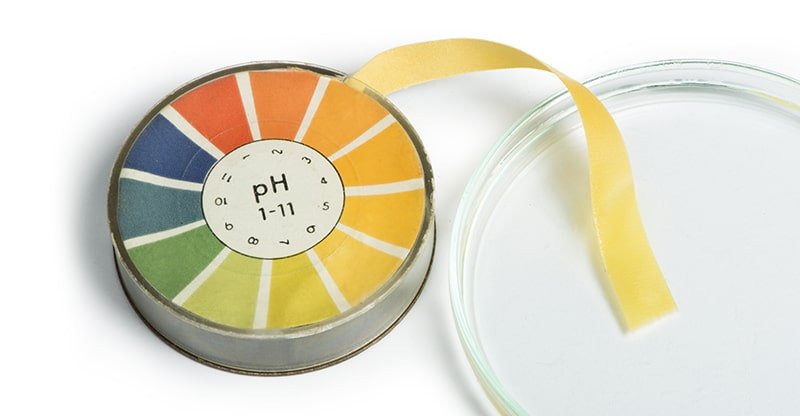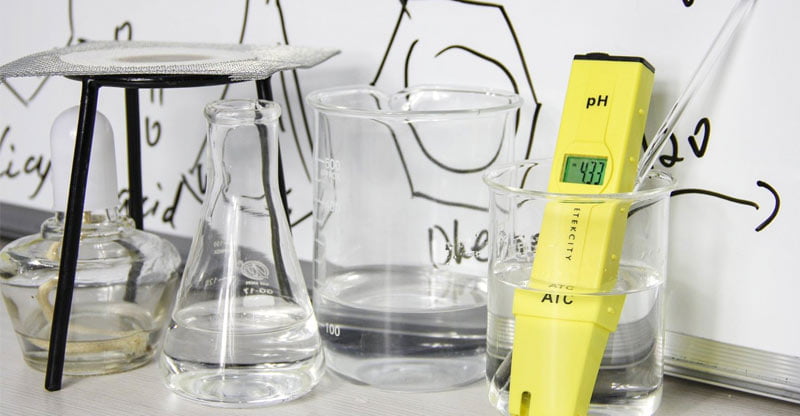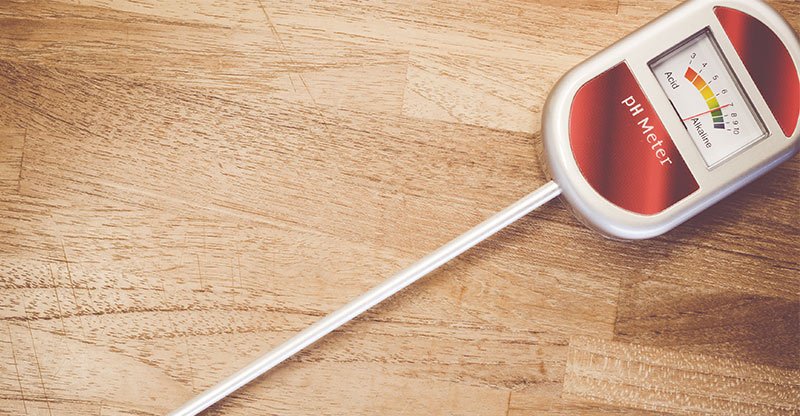It’s recommendable that you check the alkaline pH level of your water before drinking or putting to domestic use such as washing of clothes. This simple test can help prevent toxicity that may otherwise cause adverse effects. For those with Ulcerative Colitis or other digestive issues it can also be beneficial to raise the pH of your body and lower the acidity. We are big fans of Icelandic Glacial and Fiji water. There are several techniques that can be applied for this particular purpose, with the common ones including litmus paper, reagent drops and digital meter tests. Each of these methods has a different working mechanism, with distinct capabilities and precautions that one should know about before picking any.
Alkaline pH
Litmus Paper Strips

Litmus paper is available in many forms, though the most popular ones are red and blue strips. Using them is easy and only involves dropping a piece inside your liquid to see if it changes color. However, there are still other more complex models that can be used for testing water pH. Standard blue paper alters shade for strip readings below 7, while red litmus changes for those that are above this figure. There’s also a purple/neutral test kit which turns red in presence of acid and blue when there’s any base in your water.
More complex units come together with a color-coded chart so that users can know exact measurements of their readings. Though these products are relatively simple to use, they expire quickly and once opened and should be used immediately before this narrow spectrum is exhausted.
For testing purposes, pour a portion of the subject water into a transparent glass. It should only be enough to dip your paper’s tip into the solution. Pull out one strip of the blue litmus and dip inside your glass, this paper doesn’t have to soak completely and just getting it wet would work. If it turns red then acid chemical is probably present in your liquid. Repeat the same procedure using red paper which turns blue when base is detected. If both procedures return negative then your water is safe to use and no chemical has been dissolved inside. pH strips are however not very accurate and can be used together with other methods listed below for more appropriate results.
Meters

A standard alkaline pH meter consists of two primary parts, the gauge itself and either one or double probes which are inserted inside the test solution. Nowadays most meters have digital numeric displays for taking readings, however there are also moving-coil meters whereby the pointer typically moves against a set scale.
To induce electric flow along the system, a complete circuit needs to be created by connecting the two terminals with your solution. pH meters are considered by far the most accurate technique of getting alkalinity measurements. This unit requires constant calibration by the user in order to continue functioning properly.
Some models are easy to fine-tune, while others may be quite challenging. Moreover, for those that record broad spectrums a multi-level calibration process may be required. Such units need proper storage in order not to become faulty. As a user, you must have certain knowledge about the best techniques for upkeep and also determining when calibration is necessary. These meters are very reliable when properly maintained, though the gauge actually measures voltage capacity its accompanying pointer unit scales down to pH measurements only.
If your meter is fitted with two probes, then each one of them functions as a separate electrode. But in cases where there’s only one then both conductors are probably built inside the system for more convenience. These nodes aren’t in any way similar to the typical ones where a piece of metal wire connects both ends, they have a unique chemical composition set of their own. These are the sets used to determine alkalinity levels in water.
Reagent Drops
Reagent drops have been tried and tested as a sure way of taking pH measurements. Using them is quite straightforward and the units also have visual results that are comprehensible. The main component found inside this product is ethylene glycol, it reacts by changing color in presence of acid or base compounds. This solution catalyzes with any alteration in acidity hence causing the dye agent to change pigmentation accordingly. One can then compare these colorations on a standard pH chart for approximate chemical value of their liquid.
Most people use Reagent drops for testing whether tap water is safe for drinking or not. But it can also be helpful for measuring bottled commercial water. In case ion content falls below 10 on the reading, then something needs to be done so that the liquid can retain its purity. Sometimes changing tank filters or total replacement may even be required. Apart from home water, the drops can also be used for ionized or reverse osmosis water. This item is usually sold as a kit containing one dropper bottle with Reagent solution inside, two pH charts and a plastic cup for testing. Each bottle contains about 100 drops.
Procedure:
- Add a quarter teaspoon of water into your available cup, the quantity should be sufficient for all liquids in this category regardless of their source.
- Put in two drops of reagent then swirl gently till totally mixed.
- Use the color chart provided to determine alkalinity levels based on the results shown above.
Nevertheless, there are certain safety precautions that one should consider when handling Reagent solution. The substance is reactive and must be isolated from extreme cold/heat conditions, bright light such as direct sun rays, and even open atmosphere. When introduced to temperatures below 36 degrees F or above 85F, your kit may fail to give precise pH readings and will be pretty much dysfunctional. Do not leave the bottle next to a window sill as most people are in the habit of doing, or other brightly lit sections of the house where temperature is likely to cause internal fluctuations. Such actions will only make your drops become unstable and erratic. For the best results, remember to test your water as often as possible but still keep the package at room temperature with lights closed and the cap fully sealed. If the bottle cover is broken then replace it quickly before the solution inside is affected.
There’s no limit to the amount of water that can be tested using these techniques, a single portion can be representative of an entire gallon or even more.
